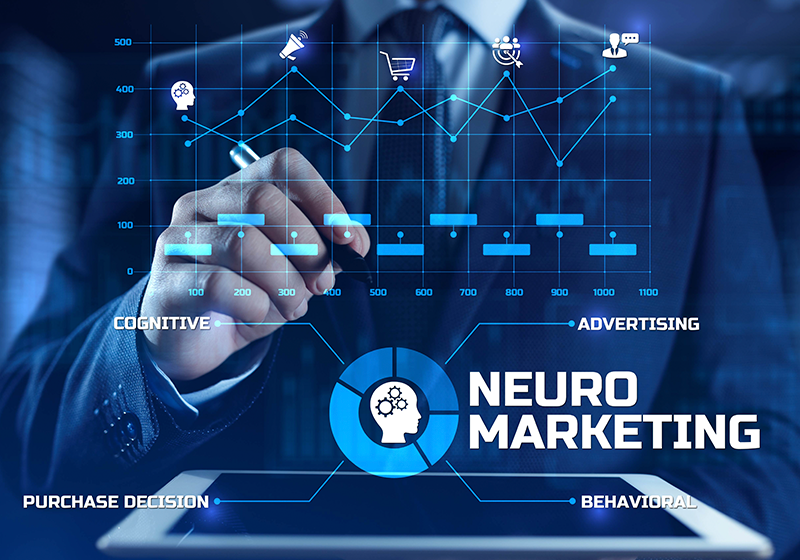Table of Contents
Writing in the Harvard Business Review back in 2015, management experts Scott Magids, Alan Zorfas and Daniel Leemon published The New Science of Customer Emotions, a groundbreaking piece on the importance of emotions and cognitive science in business. A decade later, its message is more relevant than ever, and understanding the real motivations that drive people to buy products or services has become essential to any successful business strategy. Yet many advanced neuromarketing tools have long been out of reach for many small and medium firms. Not any more. New, more affordable AI-backed platforms are now providing SMEs with game-changing insights that are bringing tangible results.
Today we’re going to explain the synergies between neuromarketing and AI, and how both can be leveraged to enhance sales and marketing processes in any business. But before we start, let’s first define these terms.
What is neuromarketing, and how can it be enhanced with AI?
Neuromarketing draws on neuroscience, cognitive psychology and marketing theory to try and understand the unconscious processes that guide purchase decisions. It does this using:
- biometric tools like eye-tracking, electroencephalography (EEG) and galvanic skin response (GSR);
- behavioural analysis.
AI can now replace or augment biometric tools for even greater impact. Neuromarketing measures consumers’ non-verbal reactions to visual, audio and narrative stimuli.
In other words, neuromarketing allows businesses to find out what people really like before they even know it themselves.
In this context, AI can act as a catalyst for gathering, processing and interpreting vast amounts of biometric, behavioural and psychographic data in real time. And most important of all, AI can help firms plan and optimise their business and marketing decisions.

Five of the best AI neuromarketing tools
Now we know what neuromarketing is and how it can be used with AI, it’s time to look at the different AI neuromarketing tools out there that can help us run our businesses more effectively. Here’s our top five:
- Affectiva – a platform that analyses emotion by recognising facial expressions and vocal cues.
- Neurons – combines predictive eye-tracking and AI to assess the visual impact of advertising creative.
- iMotions – multisensorial integration software that brings together data from EEG, eye-tracking, GSR, EMG and other sensors.
- Lumen – uses AI to simulate the human gaze and predict what people will focus on.
- ChatGPT and natural language processing (NLP) tools – analyse user language to glean emotional tone, intent and latent needs.
But these platforms may be beyond the budget of your SME: annual licences can cost anywhere between $3,000 and $15,000. So how can you dip your toe in the water without breaking the bank? I’ve got three tips for you:
- Start with just one module or feature, say eye-tracking, to assess its impact before going all in on a platform.
- Ask providers for a demo or a project-based quote; some offer rates for individual studies (a specific campaign or UX flow).
- Combine different tools (some have a freemium pricing model) to get insights into your ad creative’s effectiveness.
Proven use cases of AI-powered neuromarketing for SMEs
As entrepreneurs, managers and designers working in small businesses, in what specific ways can we add value with neuromarketing and AI approaches and frameworks?
I could give you a list as long as my arm, but I’ll limit myself to five examples 😉
- Predictive tests for ad creative
Before investing in a costly and time-consuming campaign, SMEs can test visuals, landing pages or video ads using predictive tools to try and understand which elements people will be drawn too. - Behavioural analysis for websites or online stores.
You can use AI software that analyses heatmaps and eye movements to optimise user experience and boost conversion rates by improving calls-to-action, copy and images on your website. - Personalised marketing messages.
You can also automatically tailor the way you communicate in different types of content and channels (such as email, websites and video marketing) based on the preferences of individual users, driving engagement and loyalty. - Emotional analytics in surveys
When running online surveys, emotional analytics can be used to capture users’ facial expressions in real time as they view ads or content, helps you understand what really engages them. - Packaging and design optimisation
Even product design can benefit from predictive neuromarketing: AI tools can test colours, shapes and copy to see what conveys trust, quality or desirability.
Takeaways: why you should invest in AI neuromarketing
Despite what you might think, using neuromarketing and AI expertise and platforms is not just for big brands with big budgets. There are now scalable and affordable solutions for SMEs – often with pay-per-use or freemium – that offer tangible benefits: better understanding of your customer, more conversions and sales, lower risk in decision-making processes and the generation of more emotionally powerful content.
Still not convinced about the power of neuromarketing? This TEDx talk by marketing leader and Forbes contributor Prince Ghuman will change your mind.
AI-enhanced neuromarketing can give your business a competitive edge by letting you truly understand customers and build strategies based on cognitive data, not just demographic data. The future of marketing is already here – and it’s about getting inside the minds of consumers.

